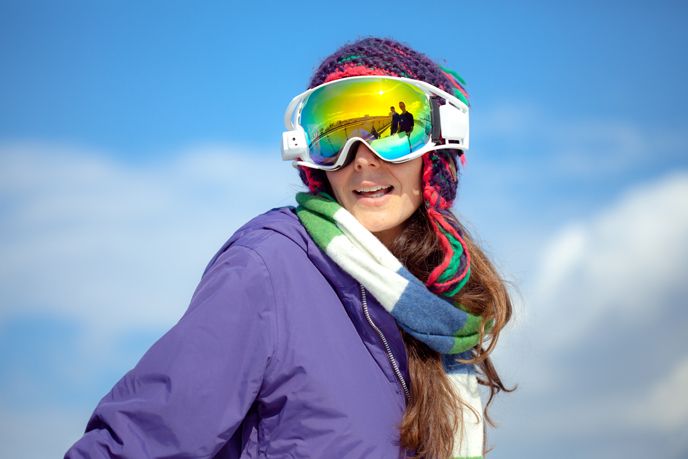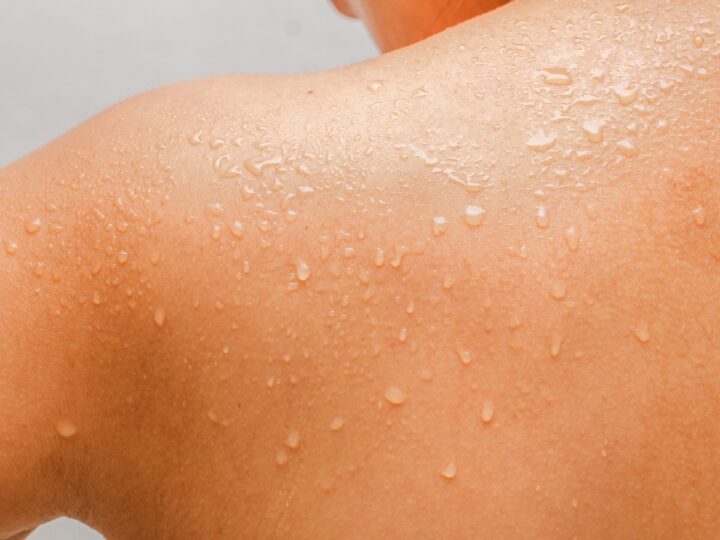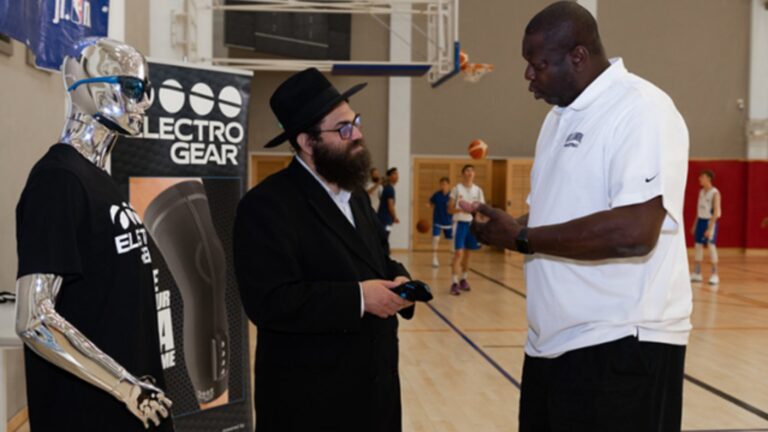Google bombed with Glass, and Apple Watch sales are sluggish so far. Yet the success of many other wearable devices such as Fitbit attests that we’re living in the era of wearing, rather than holding, our connected devices. By 2018, the global wearables market is expected to reach a value of $19 billion.
Israeli companies are right in the thick of it, pioneering core technology and retail products for this market. One prime example is Pebbles Interface of Kfar Saba, a virtual- and augmented-reality technology for wearable gaming devices, acquired last July by Facebook’s Oculus Rift.
“I think a lot of the wearables will come out of Israel,” predicted American tech evangelist Robert Scoble at Israel’s inaugural WearableTech Conference in May 2014. Scoble singled out Omek Interactive gesture-recognition software bought by Intel and PrimeSense motion-tracking chip technology acquired by Apple.
Here are 15 of the Israeli wearables already revolutionizing how we monitor our health and the well-being of our children, and how we play games.
- LifeBEAM headgear is embedded with bio-sensors to measure vital signs. The Tel Aviv company’s smart bicycle helmet, fitness caps and visors are available online and at vendors across the world, and LifeBEAM technology is built into Samsung’s new Simband platform for wearable devices to measure a range of fitness parameters.
https://www.youtube.com/watch?v=BOgImWCGL08
- The UpRight wearable training device, embedded with dual sensors, attaches to your lower back with hypoallergenic adhesive strips and gently vibrates every time you slouch. The Tel Aviv-based company claims that wearing UpRight less than an hour a day will train your muscles and mind to sit and stand upright after only two or three weeks of use. An optional companion mobile app generates a customized training program, real-time feedback, posture analytics, statistics, tips and techniques.
-
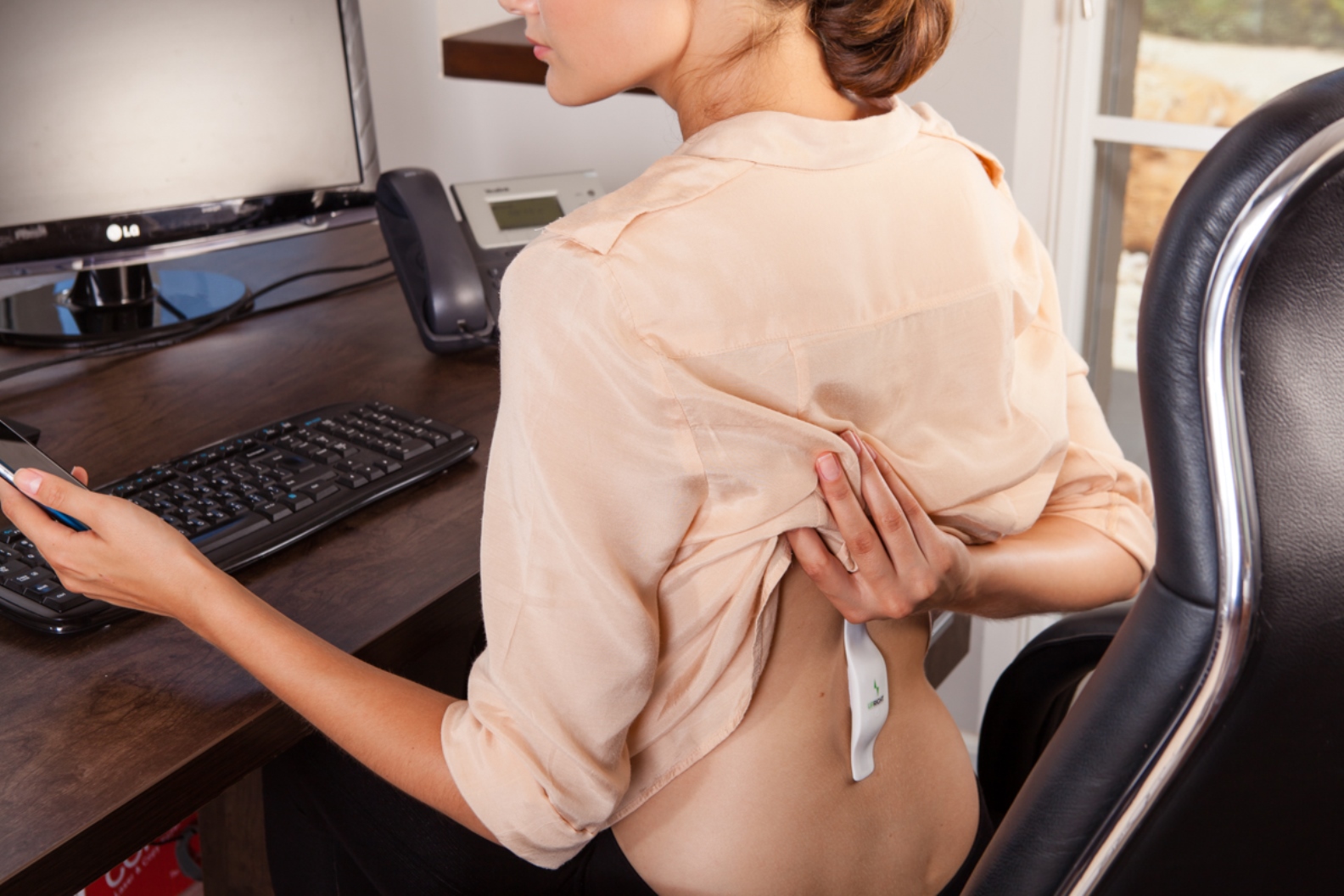 UpRight
UpRightThe hWear line of tank tops and t-shirts by Healthwatch Technologies has conductive fibers woven in, performing the job of an ECG machine and transmitting vitals to your doctor’s smartphone. Made in the Galilee, the shirts will be on the market by the end of the year in a range of colors and styles for men and women. hWear will be sold in Holland, the UK, Spain and the Balkan states to start, and later online and in pharmacies without a prescription.
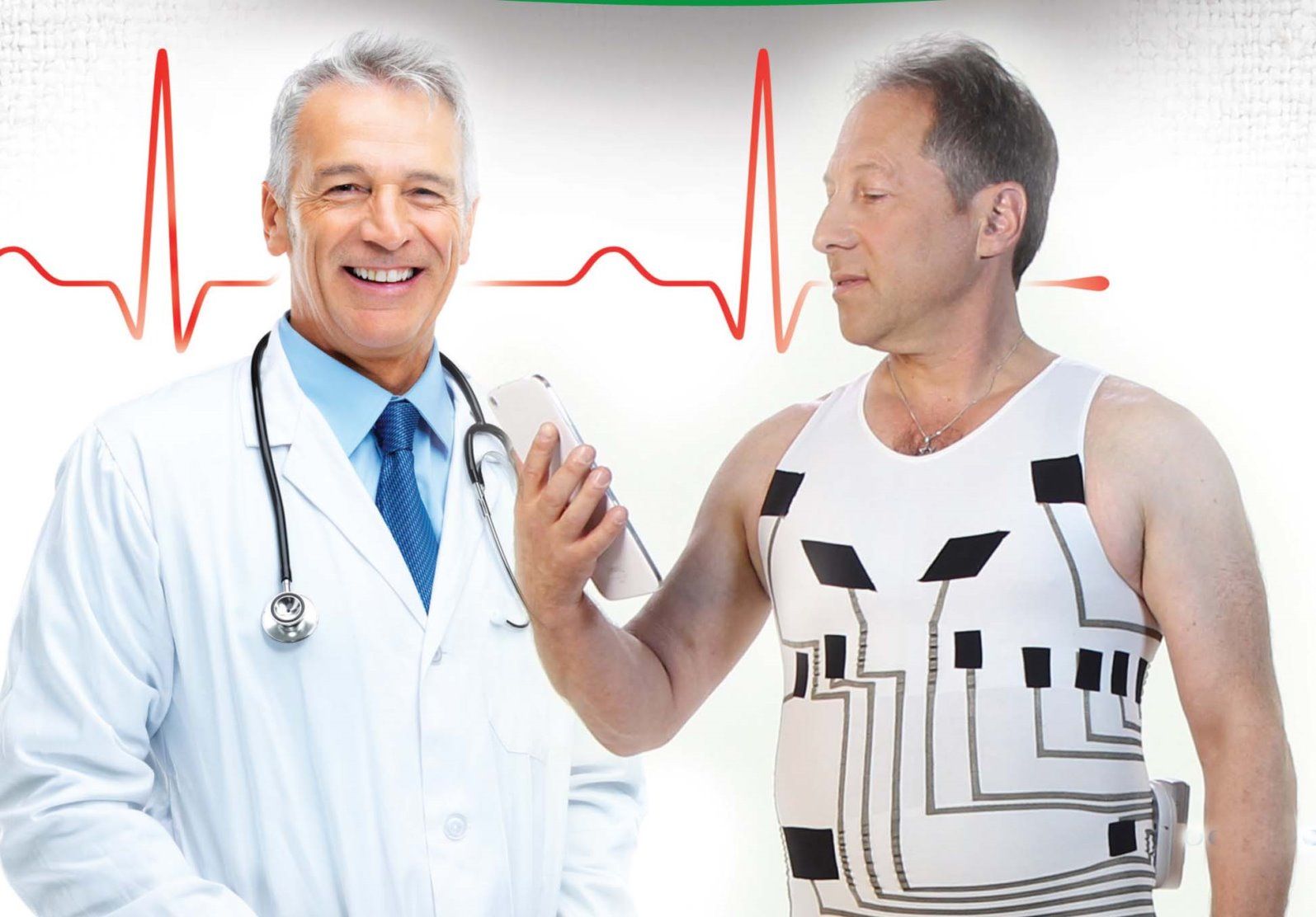
- Muv Interactive’s Bird ring-like device uses a simple Bluetooth connection to sense what your fingers are doing, where you are in the room and exactly where you’re pointing, enabling you to touch any of your devices remotely and turn the device’s display into a touch screen. Watch here to see what happened when kids ages seven to 15 got to try out the Bird, which went on sale October 12.
- The hereO GPS watch is touted as the world’s smallest real-time connected GPS tracking device, created specifically for children three years and up in a variety of fruity colors. Newly available from the Herzliya Pituach- and UK-based company online and in US and European stores in early 2016, the subscription-based product’s SIM card connects to local carriers in more than 120 countries. The free companion mobile app lets the family share locations with each other at all times.
- AngelSense is the world’s only tracking and voice monitoring device designed specifically for children with special needs. The wearable is linked to cloud-based analytics and a web app to enable continuous monitoring and alerts in real time, providing subscribers with a visual diary of the child’s day, as well as an interface where parents and caregivers can share information and photos.
- OrCam is a portable artificial-vision device for the vision-impaired. With a point of your finger or the press of a button, OrCam’s smart camera — mounted on the eyeglasses frame — recognizes text, products, faces and money, and speaks to the user through a mini earpiece. Developed in Jerusalem, OrCam currently is available in 22 US locations.
- RideOn augmented-reality ski goggles add a virtual layer of games, challenges and connectivity to skiers and snowboarders. They also can help you find the nearest ski lift or ski lodge, compete and communicate with friends on the slopes, post stats online – even throw a virtual snowball. The goggles may now be preordered for shipment by the end of 2015.
https://www.youtube.com/watch?v=6rmZIweZdMk
- Hachiko Bluetooth-enabled waterproof collar clip-on measures your dog’s activities and transmits the data to you via a free iOS app. You get details and voice messages regarding activities such as walks, mealtime and meds taken, and can add and share photos and comments on a timeline. The devices are assembled in the Tefen Industrial Zone in the Galilee.
-
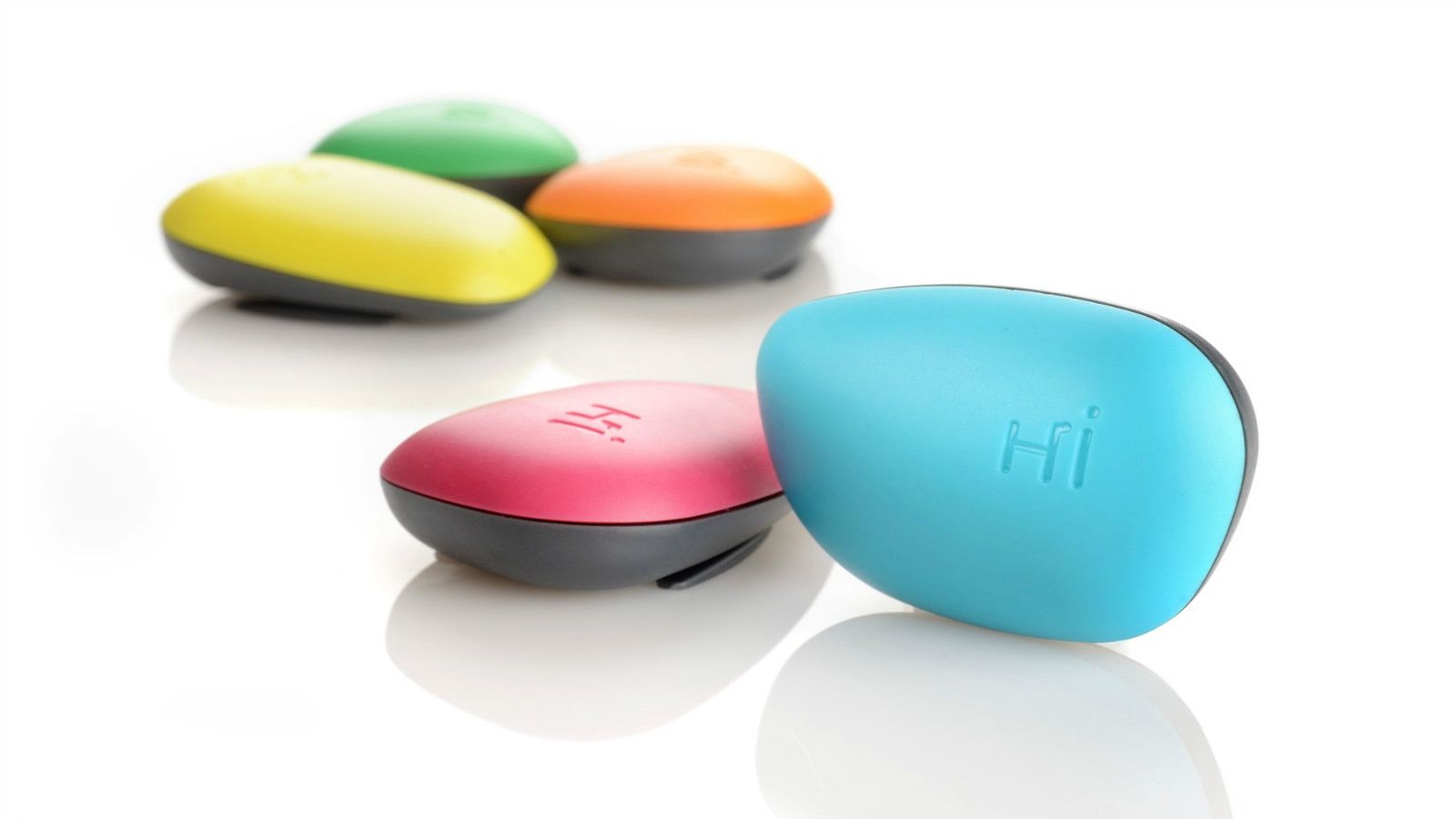 Hachiko dog sensors
Hachiko dog sensors
- MyMDband medical emergency bracelet provides instant access to medical information in the caregiver’s language by automatically adapting to the location. When the caregiver scans the laser-engraved QR code on the silicon band’s stainless-steel buckle, it displays prior medical conditions, current medications, allergies, vaccinations and last medical tests, and automatically notifies emergency contacts and apprises them of the wearer’s location.
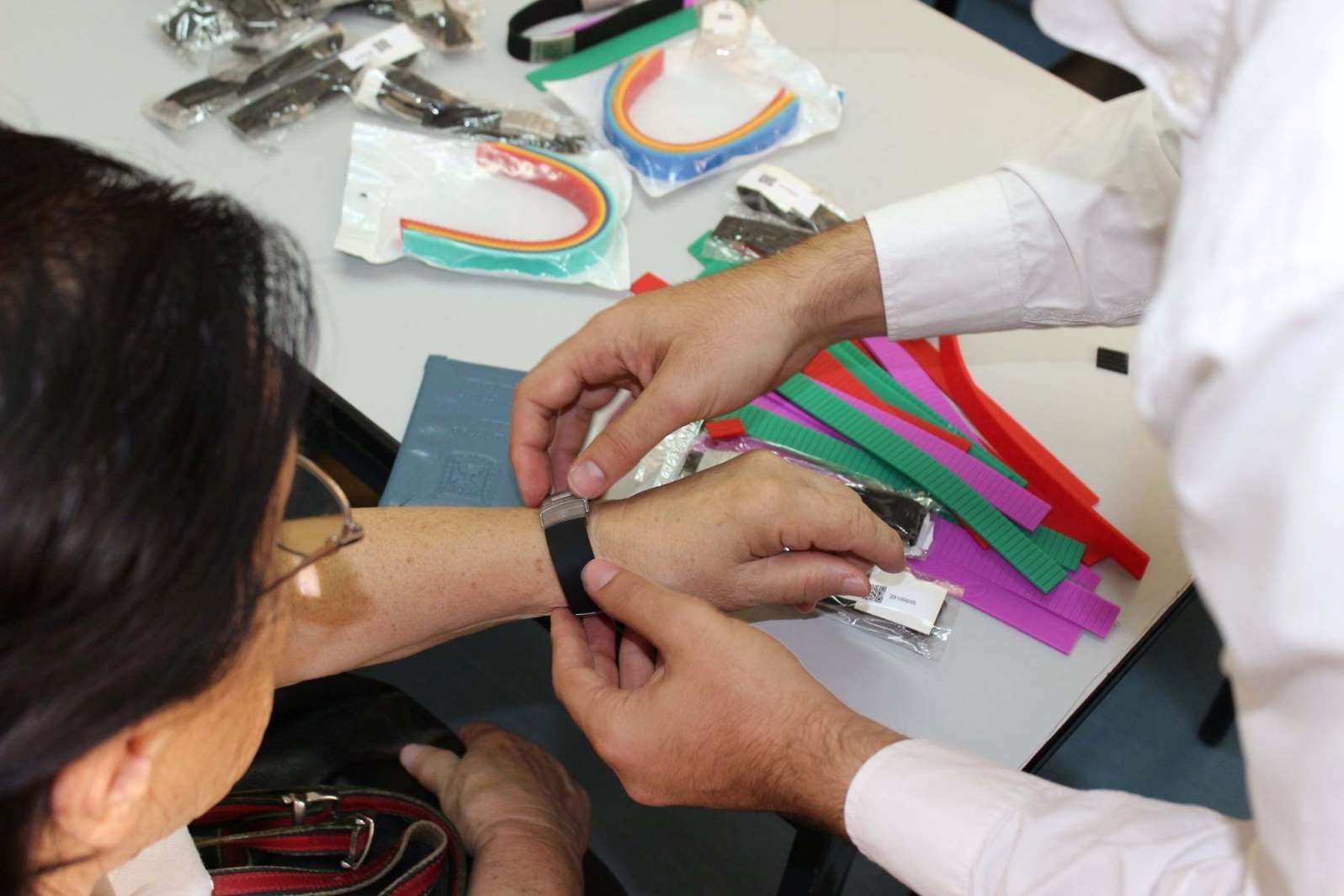
- Hyginex recently unveiled its Generation 3 wearable device for improving hand hygiene compliance and quality in hospitals. Founded in Israel and headquartered in Los Angeles, Hyginex helps prevent healthcare-associated infections by collecting individual data on employee hand hygiene. The wristbands vibrate to remind staff when they forget to clean their hands before and after patient contact, and vibrate again when handwashing has been performed for the appropriate length of time.
https://www.youtube.com/watch?v=-22cKRceYHo
- The PulsePlay Bluetooth-connected smartwatch, to launch later this year, is built specially for players of amateur tennis, table tennis, badminton and squash. Its main functions are live scorekeeping and score announcements; match history and statistics; player ranking among friends, clubs, leagues, cities and beyond; and access to a social network for racket-sports players. Andy Ram, Israel’s three-time Grand Slam champion, is cofounder and CEO of the company, headquartered in Rishpon.
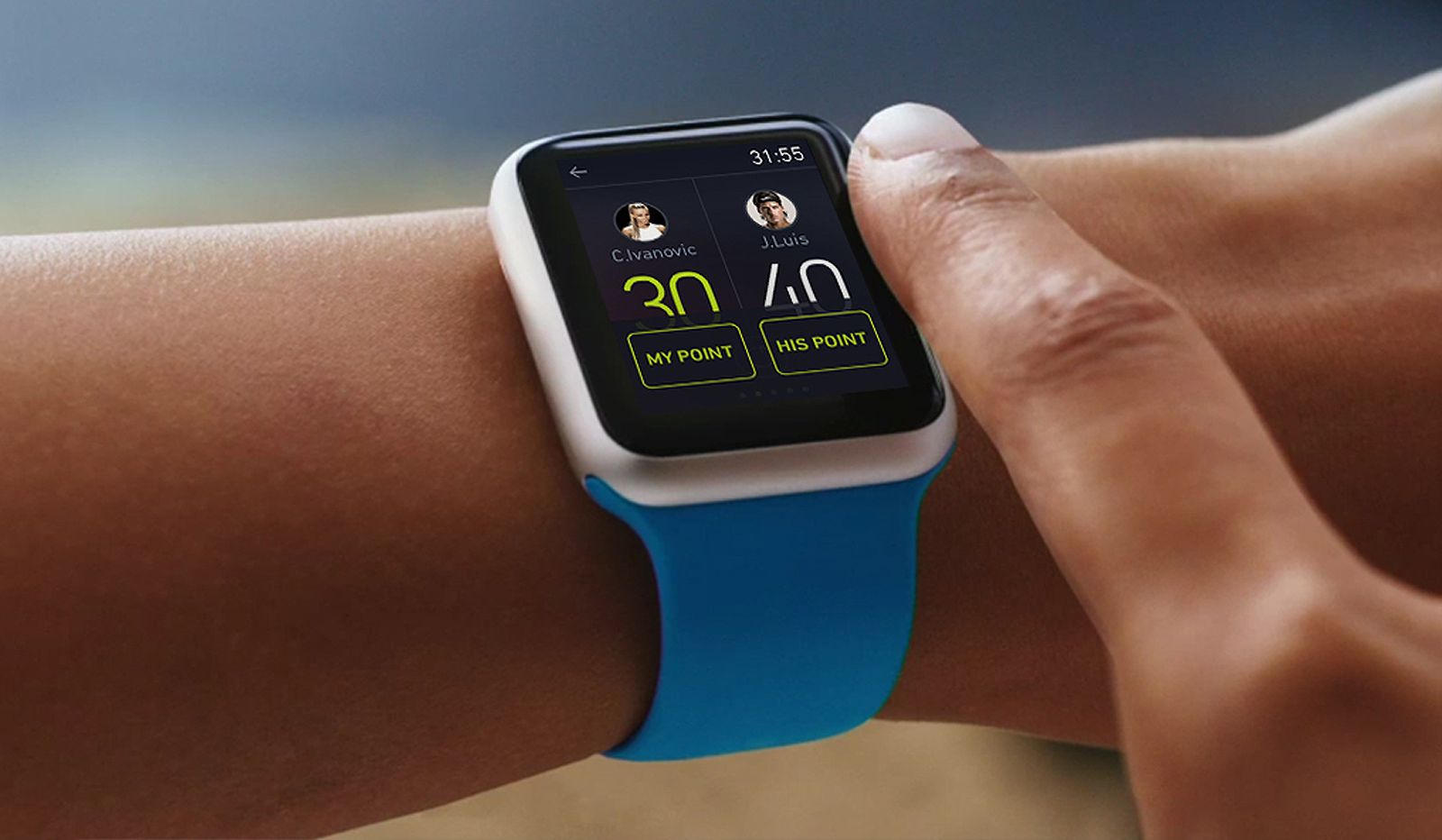
- Vivo has a patented wearable technology that merges the creative world of computer games with the real world of physical activities. Proximity sensors embedded into a bracelet, a hilt of a sword or the handles of a skipping rope record the gamer’s movements, change in body temperature and quantity of perspiration generated, then translate this data into game points. Kids are prompted by the game to perform physical activities in order to advance to the next stage.
- Re-Step by Step of Mind in Tel Aviv is a walking rehab system consisting of a pair of programmable shoes with sensor-embedded pistons. The sole height and angles change in a specific given order to facilitate motor learning and problem-solving in real time. The shoes measure the parameters of the user’s gait, while data on progress and treatment recommendations are delivered to the clinician’s computer or mobile device.
Fighting for Israel's truth
We cover what makes life in Israel so special — it's people. A non-profit organization, ISRAEL21c's team of journalists are committed to telling stories that humanize Israelis and show their positive impact on our world. You can bring these stories to life by making a donation of $6/month.





